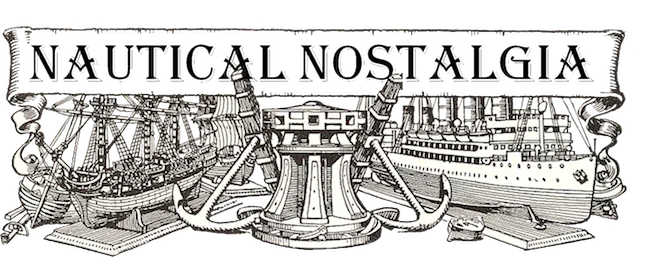From the brush of David Bray


The Blue Anchor Line was established in 1869 by Wilhelm Lund. Together with his sons Albert and Frederick, the company, based in London, initially operated sailing vessels on the UK – Australia – China – UK route. Seven sailing vessels were managed, but with the introduction of steamships on the China and Australian services, and the opening of the Suez canal, sailing ships were becoming less profitable.
From 1879 the company began to replace the sailing fleet with steamships, the first being the “Delcomyn” of 1880. The China service was dropped, and the fleet operated UK to Australia calling at South African ports on the outward and homeward legs. By 1890 all the sailing vessels had been disposed of, and nine steamers were in service. The ships carried passengers in two classes, general cargo and mail. Some were equipped for the carriage of refrigerated cargo.
Their largest vessel was the “Waratah” built in 1908 at the Whiteinch yard of Barclay Curle. Of 9,339 grt, she was 465ft overall on a beam of 59ft. Twin quadruple-expansion steam engines gave her 15 knots on trials for a service speed of 13.5 knots. Her deadweight was 10,000 tons. She was commanded Captain J E Ilbery, senior Master in the Blue Anchor.
She carried passengers in two classes; 128 in first class and upwards of 300 in third class. A further 700 could be carried in steerage accommodation in the hold tweendecks.
Completing sea trials on 23rd October 1908 and handed over to her owners, she sailed from the Clyde to London to load for her first voyage. Calling at Capetown, she arrived in Adelaide on 15th December 1908. After discharge at Adelaide, Melbourne and Sydney she loaded a full cargo of refrigerated meat, wool and metal ores for the UK, arriving in London on 7th March 1909.
Her second voyage to Australia commenced in April 1909, again calling at Capetown, and discharging cargo in Adelaide, Melbourne and Sydney. Loading wool, lead ore, frozen meat and dairy products, and a quantity of bullion for the UK she sailed from Adelaide on 7th July bound for Durban thence Capetown. She sailed from Durban on 26th July with 211 passengers and crew on board.
The following day the “Waratah” was sighted by the cargo steamer “Clan Macintyre”. Between 0400 and 0930 in the morning the faster “Waratah” overtook the Clan steamer. This was the last confirmed sighting of the”Waratah”; she was never seen again. Not equipped with radio, her only means of communication was by visual signals.
No bodies or wreckage were ever found that could have been proved to have come from “Waratah”. Her disappearance remains a mystery to this day. Extensive searches and enquiries failed to recover any evidence of the fate of the vessel, her passengers and crew. A number of theories have been postulated, some more probable than others.
There has been some discussion on the subject of the stability of the ship. It may have been that she was somewhat “tender” under certain circumstances of loading and ballasting.
However there doesn’t seem to be any evidence that the vessel was deficient in stability on the voyage in question. A more feasible explanation may relate to severe sea-state conditions not unknown in waters off the Natal coast. Shortly after “Waratah” was last sighted, severe gales were experienced. A full SW storm opposes the prevailing SW- flowing Aghulas current, and this can raise fearfully high and steep seas, especially around the 100 fathom line.
A number of reports have been made by Masters of vessels which seem to confirm a phenomenon called “the big hole”. In 1964 the mailboat “Edinburgh Castle” suffered structural damage after encountering a freak wave, the damage mainly due to the very deep trough between two waves. In 1973 the modern cargo liner “Bencruachan” suffered severe damage after encountering freak waves. The ship had her back broken in way of No 3 hold, the whole hull was hogged about 7°.
Both of these incidents occurred in the area the “Waratah” went missing, and other incidents have been reported over the years. Some 30 large ships have been lost or damaged between 1981 and 1991 in the area of the Aghulas current. Certainly the “Waratah” was smaller, had a lower freeboard and with holds covered by traditional wooden hatchboards, making her more vulnerable to heavy-weather damage than either the “Edinburgh Castle” or “Bencruachan” as mentioned.
We will never know for sure what happened to the “Waratah”. Her remains have never been located. Lund’s Blue Anchor Line did not long survive the loss of their largest and newest ship. Their remaining fleet was sold to P&O and the company was wound up.
This article, and others, follow a series which Sea Breezes magazine is publishing, featuring David’s paintings, and the stories behind them.
